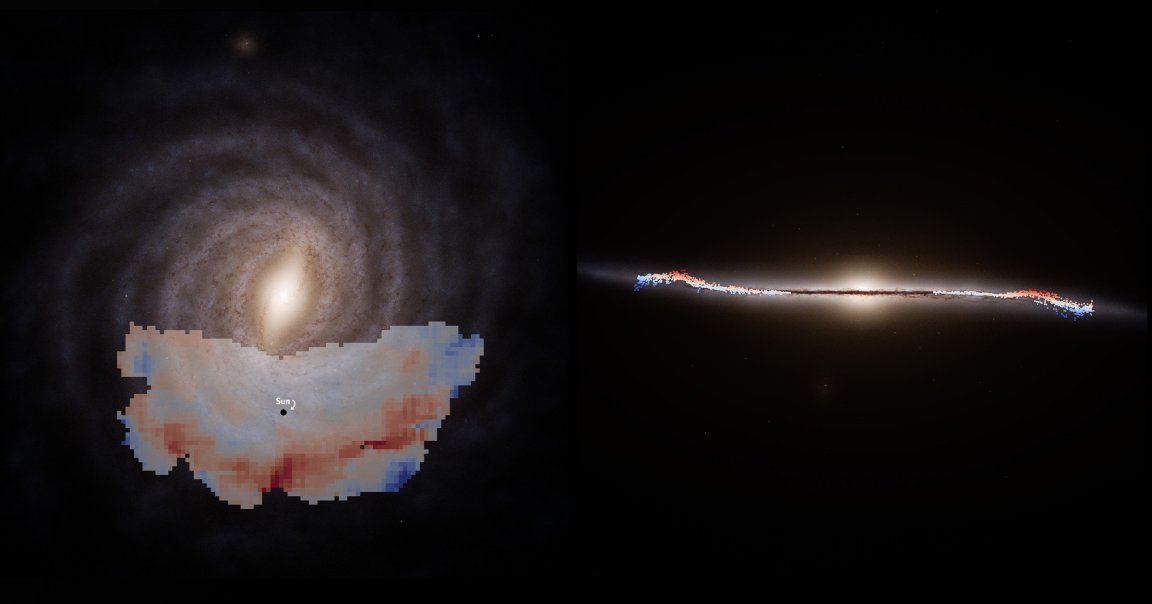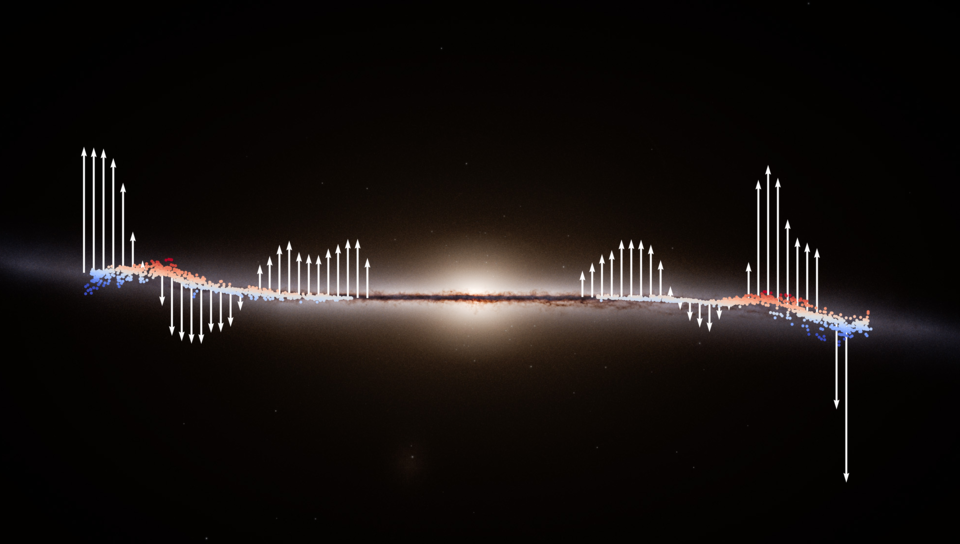
The Milky Way galaxy is like a gigantic ocean gyre or eddy that spins and wobbles around its center.
But our home galaxy also has a colossal wave rippling through it, pulling and pushing an ocean of stars and cosmic dust in its wake, according to newly released images from the European Space Agency’s Gaia space telescope.
The images show that this wave of motion emanates from the center of the Milky Way and takes up a large portion — a little less than half — of the galaxy’s entire body, which itself is warped in the outer edges. Looking at the galaxy in a vertical sideways view, you see that stars float above or below the disc’s dusty central body, as if they were fish bobbing up and down in a wave of water after a boat passes by.

The new images, publicly disseminated on Tuesday by the European Space Agency, are based on a study by European and American scientists published in the journal Astronomy & Astrophysics earlier this year; more discoveries are forthcoming in the future as astronomers continuously examine data from Gaia, which ceased operations earlier this year.
“The intriguing part is not only the visual appearance of the wave structure in 3D space, but also its wave-like behavior when we analyze the motions of the stars within it,” said Eloisa Poggio, an astronomer at Italy’s Istituto Nazionale di Astrofisica and first author of the study, in a statement about the research.
The scientists detected this pattern after analyzing the position and velocity of more than 20,000 young stars and saw that these glittering bodies “exhibit both radial and vertical systematic motions,” reads the study. They are caught in a wave of motion that spans 30 to 65 thousand light years of spacetime real estate, while rippling away from the Milky Way’s nucleus.
The scientists are not sure what’s causing this wave pattern to manifest, but a possible explanation is that a dwarf galaxy either passed by or was devoured by our much larger galaxy in the past, leaving traces of this violent encounter in the wave formation, according to the study. Previous simulations of this cannibalistic scenario affirms that this could result in a wave pattern.
Another possible explanation is that this wave is somehow connected to the Radcliffe Wave, a gaseous region of the Milky Way that’s about 500 light years away from our solar system, but the scientists in the study said they are likely not connected because Radcliffe is smaller and is located in a different part of the galaxy from the big wave.
Analysis of additional data from the Gaia telescope and others may yield reasons why the galaxy has this intriguing wave pattern; whatever the reason, each research project brings us deeper understanding of the glittering and mysterious Milky Way, our cosmic home.
More on the Milky Way: There’s Something Very Strange About Our Galaxy